Beersheba, or Be'er-Sheva, is the largest city in the Negev desert of southern Israel and is known as the "Capital of the Negev". It is the center of the fourth-most populous metropolitan area in Israel and the eighth-most populous Israeli city with a population of 214,162. Beersheba is also the second-largest city in area, encompassing 117,500 dunams.
6 hours ago : Iran Strikes Beersheba Hospital, Israel Defends, Trump Considers US Role In Conflict
Iran struck a Beersheba hospital, prompting Israel to use interceptors. Patients were moved underground beforehand. Trump will decide on US involvement in the conflict within two weeks.
May 1900: Description of Beersheba
In May 1900, a visitor to Beersheba found only a ruin, a two-storey stone khan, and several tents.
1900: Turkish town planning efforts
Around 1900, Turkish efforts at town planning and development were made in Beersheba, though it remained a watering place and small trade center.
1901: Barracks and other buildings in 1901
By the start of 1901, Beersheba had a barracks with a small garrison as well as other buildings.
1901: Muhammed Carullah Efendi replaces Kamal
In 1901, Muhammed Carullah Efendi replaced Isma'il Kamal Bey as the governor (kaymakam) of the Beersheba sub-district.
August 1902: Alois Musil's observation
In August 1902, Austro-Hungarian-Czech orientalist Alois Musil visited and made observations about Beersheba.
1902: Population increase began
Between 1902 and 1911, the population of Beersheba increased from 300 to 800.
1903: Hamdi Bey replaces Muhammed Carullah Efendi
In 1903, Hamdi Bey replaced Muhammed Carullah Efendi as the governor (kaymakam) of the Beersheba sub-district.
1906: Great Mosque of Beersheba Built
In 1906, during the Ottoman era, the Great Mosque of Beersheba was built with donations collected from the Bedouin residents in the Negev.
1907: Large village in 1907
By 1907, Beersheba had a large village, military post, a residence for the kaymakam and a large mosque.
1908: Governor promoted in 1908
In 1908, the governor of the Beersheba sub-district was promoted to 'adjoint' to the governor of the Jerusalem district.
1911: Population increase in 1911
Between 1902 and 1911, the population of Beersheba increased from 300 to 800.
1914: Population in 1914
By 1914, there were 1,000 people living in 200 houses in Beersheba.
October 30, 1915: Inauguration of military railroad
On October 30, 1915, the Ottomans inaugurated a military railroad from the Hejaz line to Beersheba. The event was attended by Ottoman army commander Jamal Pasha.
October 1917: Railway construction by British
In October 1917, the British constructed a railway between Rafah and Beersheba.
October 31, 1917: Battle of Beersheba
On October 31, 1917, General Allenby's troops breached the Turkish defensive line between Gaza and Beersheba, leading to the Battle of Beersheba.
November 7, 1917: Third Battle of Gaza
On November 7, 1917, the British succeeded in the Third Battle of Gaza during World War I.
1917: Train line captured in 1917
In 1917, Allied forces captured the Ottoman train line to Beersheba towards the end of World War I.
May 1918: Railway opened to the public
In May 1918, the British railway between Rafah and Beersheba opened to the public, serving the Negev and settlements south of Mount Hebron.
1922: 1922 census of Palestine
According to the 1922 census of Palestine, Beersheba had a population of 2,356 (2,012 Muslims, 235 Christians, 98 Jews and 11 Druze).
1928: Jewish abandonment of Beersheba
In 1928, at the beginning of the tension between the Jews and the Arabs over control of Palestine, many Jews abandoned Beersheba.
1931: 1931 census of Palestine
According to the 1931 census, Beersheba had 545 occupied houses and a population of 2,959 (2,791 Muslims, 152 Christians, 11 Jews and five Baháʼí).
1936: Arab attack and Jewish departure
In 1936, after an Arab attack on a Jewish bus, the remaining Jews left Beersheba, escalating into the 1936–39 Arab revolt in Palestine.
1938: 1938 village survey
The 1938 village survey did not cover Beersheba due to the area's largely nomadic population.
1945: 1945 village survey
The 1945 village survey conducted by the Palestine Mandate government found a population of 5,570 in Beersheba (5,360 Muslims, 200 Christians and 10 others).
1947: UN Partition Plan
In 1947, the UN Partition Plan designated Beersheba to be part of the Arab state.
1947: UNSCOP proposal
In 1947, the United Nations Special Committee on Palestine (UNSCOP) initially proposed that Beersheba be included within the Jewish state in their partition plan for Palestine.
May 1948: Beersheba occupied by Egyptian army
In May 1948, Beersheba was occupied by the Egyptian army as part of the First Arab-Israeli War. The 1947 UN Partition Plan had designated Beersheba to be part of the Arab state.
May 1948: Egyptian forces stationed
In May 1948, Egyptian forces were stationed at Beersheva.
October 1948: Beersheba taken by Israeli troops
In October 1948, Beersheba was taken by Israeli troops and rapidly settled by new immigrants, becoming the administrative, cultural, and industrial centre of the Negev.
1948: City fell to Israeli forces
In 1948, Beersheba fell to Israeli forces.
1949: Armistice Agreements grant Beersheba to Israel
Following the conclusion of the war, the 1949 Armistice Agreements formally granted Beersheba to Israel, transforming it into an Israeli city.
1950: Municipal emblem design
In 1950, Beersheba changed its municipal emblem. The 1950 emblem, designed by Abraham Khalili, featured a tamarix tree, a factory and water flowing from a pipeline.
1953: Cinema Keren Opens
In 1953, Cinema Keren, the Negev's first movie theater, opened in Beersheba. It was built by the Histadrut and had seating for 1,200 people.
1953: Mosque as Courthouse
In 1953, the Great Mosque of Beersheba began to be used as the city's courthouse.
1956: Beersheba booming city
By 1956, Beersheba was a booming city with a population of 22,000.
1959: Wadi Salib riots spread
In 1959, during the Wadi Salib riots, the unrest spread quickly to other parts of the country, including Beersheba.
1960: Soroka Hospital opened
In 1960, Soroka Hospital opened its doors in Beersheba.
1968: Population reaches 80,000
By 1968, the population of Beersheba had grown to 80,000.
1969: University of the Negev established
In 1969, the University of the Negev, which would later become Ben-Gurion University of the Negev, was established in Beersheba.
1972: Municipal emblem modernized
In 1972, the municipal emblem of Beersheba was modernized with the symbolic representation of the Twelve Tribes and a tower.
1973: Chess club founded
In 1973, the Beersheba chess club was founded by Eliyahu Levant.
1973: Israel Sinfonietta and Beersheba Theater Founded
In 1973, the Israel Sinfonietta was founded in Beersheba, and the Beersheba Theater also opened. A memorial commemorating fallen Israeli soldiers designed by Danny Karavan was erected on a hill north-east of the city.
1975: Israeli Championship Win
In 1975, Hapoel Be'er Sheva won the Israeli championship.
1976: Israeli Championship Win
In 1976, Hapoel Be'er Sheva won the Israeli championship.
1979: Anwar Sadat visits Beersheba
In 1979, the then Egyptian president Anwar Sadat visited Beersheba.
1980: Light Opera Group Established
In 1980, the Light Opera Group of the Negev was established, performing musicals in English every year.
1983: Population exceeds 110,000
In 1983, the population of Beersheba was more than 110,000.
1990: Second and third waves of immigration
Since 1990, Beersheba has experienced second and third waves of immigration, bringing Russian-speaking immigrants from the former Soviet Union and Beta Israel immigrants from Ethiopia.
1991: Tennis Center Opened
In 1991, Beersheba's tennis center, featuring eight lighted courts, was opened.
1997: State Cup Win
In 1997, Hapoel Be'er Sheva won the State Cup.
October 19, 1998: Grenade attack in Beersheba
On October 19, 1998, sixty-four people were wounded in Beersheba in a grenade attack.
1998: Agreement Signed for Light Rail
In 1998, an agreement was signed for the construction of a light rail system in Beersheba, but it was not implemented.
2000: Last snowfall before 2015
Before the snowfall on February 20, 2015, the last time Beersheba experienced snowfall was in 2000.
2003: Metrodan Beersheba Established
In 2003, Metrodan Beersheba was established with a fleet of 90 buses, operating 19 lines in the city.
August 31, 2004: Suicide bombings on commuter buses
On August 31, 2004, sixteen people were killed in two suicide bombings on commuter buses in Beersheba; Hamas claimed responsibility.
2004: Railway Line Rebuild Initiated
Between 2004 and 2012, the railway line to Beersheba was double tracked and rebuilt using an improved alignment and all its level crossings were grade separated.
2004: Negev Museum of Art Reopened
In 2004, the Negev Museum of Art reopened in the Ottoman Governor's House, and an art and media center for young people was established in the Old City.
2004: Senior National League Championship
In 2004–2005, Beersheba's rugby team won the Senior National League championship.
August 28, 2005: Suicide bombing at bus station
On August 28, 2005, another suicide bomber attacked the central bus station in Beersheba, seriously injuring two security guards and 45 bystanders.
2005: Senior National League Championship
In 2004–2005, Beersheba's rugby team won the Senior National League championship.
2005: World Team Chess Championship Hosted
In 2005, Beersheba hosted the World Team Chess Championship.
December 27, 2008: Start of Operation Cast Lead
On December 27, 2008, Operation Cast Lead began, leading to rocket fire from Gaza into southern Israel, including Beersheba.
2008: Promotion to Israeli Premier League
In 2008, Hapoel Be'er Sheva was promoted in the 2008–2009 Liga Leumit season.
2008: Science park Completion
In 2008, a Science park funded by the RASHI-SACTA Foundation, Beersheba Municipality and private donors was completed.
2008: Finance Ministry Considers Freezing Tel Aviv Project
In 2008, the Israeli Finance Ministry contemplated freezing the Tel Aviv Light Rail project and building a light rail system in Beersheba instead, but that did not happen.
2008: Chess Olympiad Silver Medal
In 2008, the Israeli chess team won the silver medal at the Chess Olympiad.
January 18, 2009: End of Operation Cast Lead
On January 18, 2009, the ceasefire marked the end of Operation Cast Lead. During the operation, 2,378 rockets and mortars were fired from Gaza into southern Israel, including Beersheba.
2009: Promotion to Israeli Premier League
In 2009, Hapoel Be'er Sheva was promoted in the 2008–2009 Liga Leumit season.
2009: Gateway to the Negev Built
In 2009, a new tourist and information center, Gateway to the Negev, was built in Beersheba.
2010: Axe attack
In 2010, an Arab attacked and injured two people with an axe in Beersheba.
2010: Chess Olympiad Bronze Medal
In 2010, the Israeli chess team won the bronze medal at the Chess Olympiad.
2010: World Wrestling Championships Medals
In the 2010 World Wrestling Championships, students from the AMI wrestling school in Beersheba won five medals.
2011: Plans to turn Beersheba into a "water city"
In 2011, city hall announced plans to turn Beersheba into the "water city" of Israel, including projects like "Beersheva beach" and other fountains.
2011: Supreme Court Order
In 2011, the Supreme Court of Israel ordered that the Great Mosque of Beersheba be turned into a museum of Islam.
December 2012: New urban forest created
In December 2012, a plan to build 16,000 new housing units in the Ramot Gimel neighborhood was scrapped in favor of creating a new urban forest.
2012: Stabbing attack stopped
In 2012, a Palestinian from Jenin was stopped before a stabbing attack in a "safe house" in Beersheba.
2012: High-Tech Park Construction
In 2012, a large high-tech park was built near the Be'er Sheva North Railway Station, and construction began on its fifth commercial building. Companies such as Deutsche Telekom, Elbit Systems, EMC, Lockheed Martin, Ness Technologies, WeWork and RAD Data Communications opened facilities there.
2012: Ring Trail Award
In 2012, the Beersheba "ring trail", a 42-kilometer hiking trail around the city, won third place in the annual environmental competition of the European Travelers Association.
2012: City rebranding
Since 2012, Beersheba has incorporated the number seven as part of the city rebranding.
2012: Railway Line Rebuilt
Until 2012, the railway line to Beersheba used a slow single-track configuration. Between 2004 and 2012 the line was double tracked and rebuilt using an improved alignment and all its level crossings were grade separated. In 2012, the railway line to Beersheba was rebuilt with double tracks, an improved alignment, and grade separation for all level crossings.
2014: Light Rail System Announcement
In 2014, Mayor Ruvik Danilovich announced that a light rail system would be built in Beersheba.
February 20, 2015: Snowfall in Beersheba
On February 20, 2015, Beersheba experienced a rare snowfall, the first such occurrence in the city since 2000.
October 18, 2015: Gunman kills soldier at bus station
On October 18, 2015, a lone gunman shot and killed a soldier guarding the Beersheva bus station before being gunned down by police.
September 2016: Terror attack thwarted
In September 2016, the Shin Bet thwarted a Palestinian Islamic Jihad terror attack at a wedding hall in Beersheba.
November 2016: Inter-city bus service transfer
In November 2016, the intercity bus service was transferred to Dan Be'er Sheva, and Metrodan Beersheba was shut down. Dan Be'er Sheva introduced electronic payment, stopping pay at the driver.
2016: Israeli Championship Win
In 2016, Hapoel Be'er Sheva won the Israeli championship.
2017: Israeli Championship Win
In 2017, Hapoel Be'er Sheva won the Israeli championship.
2017: New urban building plan approved
In 2017, a new urban building plan was approved for Beersheba, designed to raise the city's population to 340,000 by 2030.
2017: Ministry Approval for Planning
In 2017, the Ministry of Transport gave the Beersheba municipality approval to proceed with preliminary planning on a light rail system.
2018: Israeli Championship Win
In 2018, Hapoel Be'er Sheva won the Israeli championship.
2019: Construction of new public hospital approved
In 2019, the construction of a new public hospital, which will be named after Shimon Peres, was approved in Beersheba.
2020: State Cup Win
In 2020, Hapoel Be'er Sheva won the State Cup.
2021: Outline plan approved for housing construction
In 2021, an outline plan was approved for the construction of 34,000 housing units in Beersheba to increase the population to 400,000.
March 22, 2022: Stabbing and vehicle-ramming attack
On March 22, 2022, a convicted Islamic State supporter carried out a stabbing and vehicle-ramming attack in Beersheba, killing four people and injuring two others.
2022: Education Statistics
In 2022, Beersheba had approximately 8,975 preschoolers in about 300 preschools and kindergartens. There were 99 schools with a student population of about 45,291. 90% of Beersheba's 12th graders earned a Bagrut matriculation certificate.
2022: State Cup Win
In 2022, Hapoel Be'er Sheva won the State Cup.
August 2023: Light Rail Officially Approved
In August 2023, the Beersheba light rail was officially approved.
2024: Midbarium Opened
In 2024, Midbarium, a desert zoo and amusement park, was opened, replacing the NegevZoo.
2030: Projected Population
By 2030, Beersheba is projected to have a population of 340,000.
2033: Expected Completion of Light Rail
The Beersheba light rail is expected to be completed by 2033.
Mentioned in this timeline

WeWork is a company that provides shared workspace including physical...
The Union of Soviet Socialist Republics USSR existed from to...
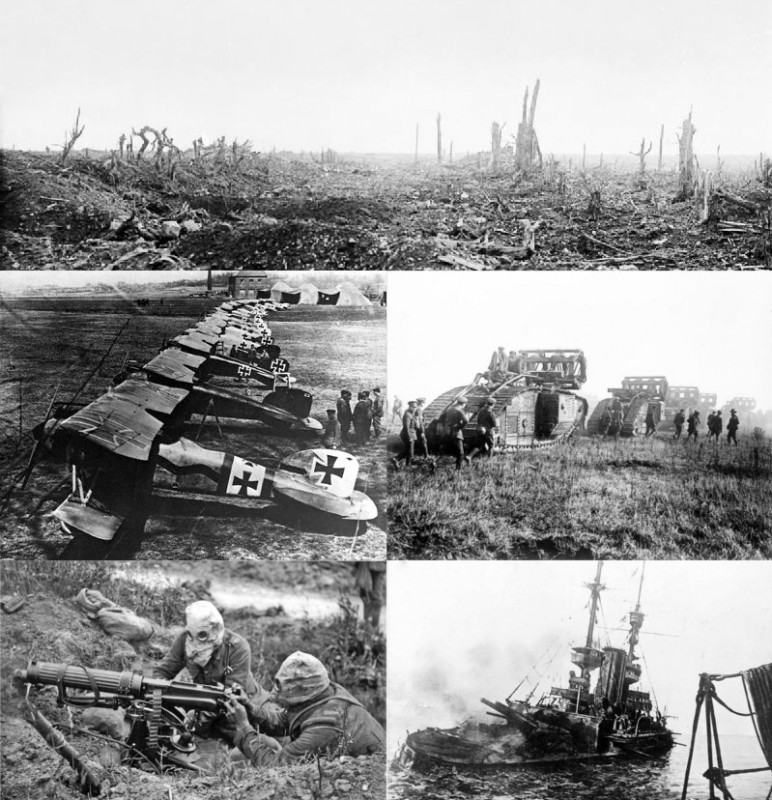
World War I a global conflict between the Allies and...
Syria officially the Syrian Arab Republic is a West Asian...
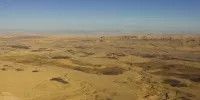
A desert is a landscape characterized by minimal precipitation leading...
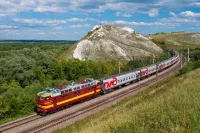
Trains are a connected series of vehicles traveling on railway...
Trending

12 days ago Young NBA star reignites Dennis Rodman's legacy; Worthy defends Rodman comparison.
2 hours ago Oregon House Celebrates Pride Month with Black Drag Performance, Sparks Political Divide.
2 hours ago Jenni Rivera's mother, Doña Rosa, is hospitalized and battling heart failure; Prayers requested.
3 hours ago Dodgers Defeat Padres: Smith's Walk-Off Homer Secures Victory in Historic Game
4 hours ago San Diego Celebrates Juneteenth 2025 with Fair and Block Party Events
4 hours ago Emmet Sheehan's triumphant return from Tommy John surgery boosts Dodgers in dramatic win.
Popular
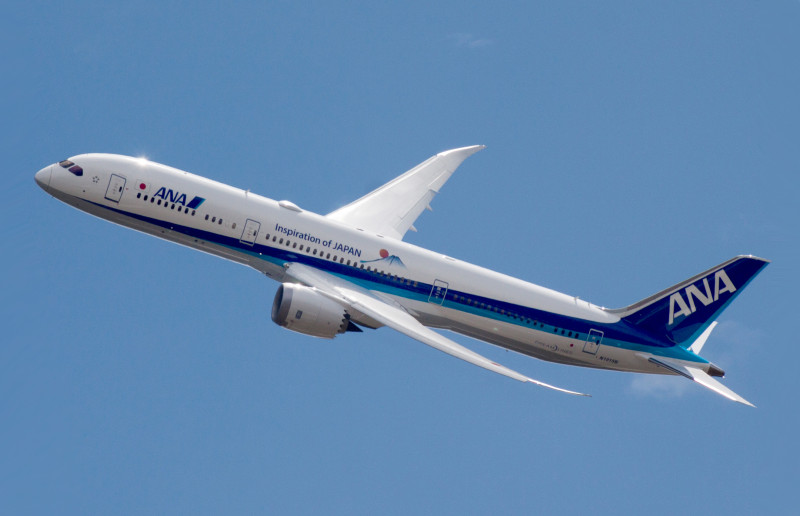
The Boeing Dreamliner is an American wide-body airliner developed by...

Cristiano Ronaldo often called CR is a Portuguese professional footballer...

Kristi Noem is an American politician and Air Force Auxiliary...

Greta Thunberg is a Swedish climate activist who gained international...

Kash Patel is an American lawyer and former federal prosecutor...
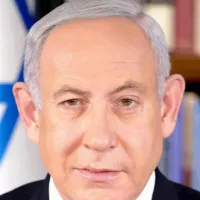
Benjamin Netanyahu is a prominent Israeli politician currently serving as...